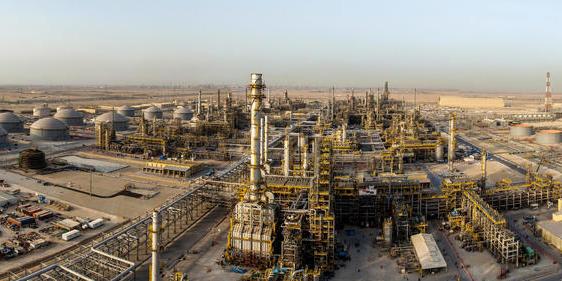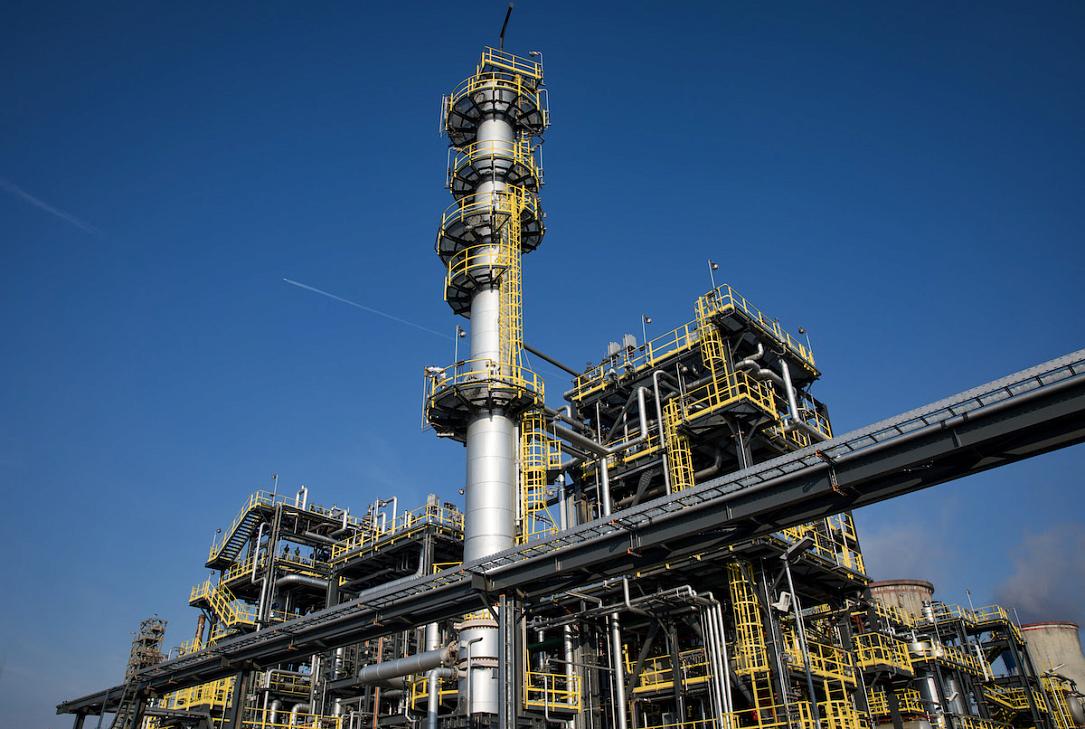Introduction
The global movement for decarbonization has put sustainable fuels at the forefront of the energy transition discussion. With the GCC’s strategic location, resources, and ambitious diversification plans, is it poised to play a major role in its production and export?
This Expert Insights piece delves into the key factors that will determine the GCC’s success in scaling sustainable fuels for export,t backed by our discussion with network expert Thomas Rebeyrol, former Chief Operating Officer (COO) at ADNOC Distribution. We also dive into broader market analysis in order to offer a comprehensive perspective on the challenges and opportunities ahead.
“Sustainable fuels are critical for the GCC in order to maintain their leadership position in the energy sector worldwide.” Thomas Rebeyrol, Former COO, ADNOC Distribution via the Infoquest Expert Network.
The Export Scaling Equation
For the GCC to transition to a scalable, export-oriented, sustainable fuels industry, five critical elements must be effectively aligned:
1. Feedstock Access
The production of advanced biofuels, such as Sustainable Aviation Fuel (SAF) and biodiesel, which relies heavily on access to sustainable feedstocks. The primary feedstock currently is used cooking oil, which is a limited resource sourced largely from Asia.
“Used cooking oil is limited and the whole world is fighting over it,” cautions Thomas Rebeyrol, highlighting the competitive nature of feedstock acquisition.
Moreover, the GCC’s geographical advantage lies in the proximity of its ports, including Ruwais (UAE), Yanbu (Saudi Arabia), and Sohar (Oman), to key feedstock exporting countries in Southeast Asia, such as Malaysia, Indonesia, and China.
2. Scalable Infrastructure
The GCC boasts a highly developed oil and gas infrastructure, but the challenge lies not in the current infrastructure but in its adaptability for sustainable fuel production. For biofuels, minimal retrofitting of existing refineries may be sufficient.
However, hydrogen-based fuels, like green and blue hydrogen and ammonia, necessitate the development of dedicated infrastructure due to safety concerns, particularly with hydrogen’s volatility and its specialized needs.
“Hydrogen is extremely volatile… beyond 20% blending, you need to build from scratch,” Rebeyrol emphasizes, underscoring the significant investment required in new infrastructure.
3. Offtake Agreements
Sustainable fuel projects, especially those involving substantial capital expenditure, cannot proceed without guaranteed offtake agreements.
“If you want to go into SAF, you need a long-term contract with airline companies, just like a solar PPA (Power Purchase Agreement),” Rebeyrol explains.
Therefore, securing long-term purchase commitments from key consumers, including airlines and European refiners, is crucial to de-risk projects and unlock necessary financing.
4. Project Financing
Scaling up sustainable fuel production demands significant capital investment. Financing for these projects typically comes from a combination of sources such as:
- Sovereign wealth funds: Entities like the Public Investment Fund (PIF) in Saudi Arabia and Abu Dhabi’s ADQ play a crucial role in providing capital for large-scale projects.
- Debt lenders: Debt financing, often secured by the revenue streams guaranteed through long-term offtake agreements.
- International partners: Collaboration with international energy companies and technology providers can bring in additional capital and expertise.
“These investments often exceed $20 billion. You don’t move that money without guarantees,” an Rebeyrol highlights.
5. Regulatory Certainty
A clear and supportive regulatory environment is essential to incentivize investment and foster the growth of the sustainable fuels sector. This includes:
- Long-term tax incentives to make sustainable fuels economically competitive.
- Emissions mandates that create demand for cleaner fuels.
- Export certifications that facilitate international trade.
The Power of Partnerships

NOC + IOC = Export-Ready Scale
Strategic partnerships, particularly between National Oil Companies (NOCs) and International Oil Companies (IOCs), are crucial for achieving export-ready scale in sustainable fuels production.
“The Aramco x TotalEnergies JV is a capitalistic collaboration to develop sustainable fuels for local and export use,” Rebeyrol points out, illustrating the benefits of such collaborations.
NOCs bring to the table
- Capital: Substantial financial resources for large-scale projects.
- Feedstock integration: Access to and control over domestic feedstock sources.
- Local execution: Expertise in navigating local regulations and infrastructure development.
IOCs contribute
- Energy transition know-how: Technological expertise and experience in developing and deploying clean energy technologies.
- Global offtake networks: Established relationships with international consumers and access to global markets.
- Technical design: Engineering expertise for designing and building complex sustainable fuel production facilities.
This dual approach combines the strengths of both types of companies, effectively de-risking projects and aligning long-term incentives for all stakeholders.
Where Are We Now?
The GCC is already making significant strides in developing its sustainable fuels capacity:
UAE (ADNOC)
- Blue ammonia production is underway, with a capacity of 1 million tons per year and plans to ramp up to 2 million tons per year.
- A massive carbon capture facility, with a capacity to capture 10 million tons of CO2 per year, is under development.
- SAF (Sustainable Aviation Fuel) and biodiesel production has been approved and is progressing at the Ruwais refinery.
Saudi Arabia (Aramco)
- The Jubail refinery is undergoing conversion to produce SAF, demonstrating the region’s commitment to decarbonizing the aviation sector.
- Aramco has entered into a Joint Venture (JV) with TotalEnergies to develop sustainable fuels projects.
What Are the Bottlenecks?
Despite the progress, several bottlenecks need to be addressed to achieve widespread scaling:
Feedstock Security
For biofuel production to expand significantly, securing long-term access to sustainable feedstocks is critical.
Market Ambiguity
While e-fuels hold great promise for decarbonizing various sectors, their high production costs and current uncertainty regarding market demand present a challenge.
“We still don’t know how big the e-fuel market will be. For now, the economics are tough,” Rebeyrol acknowledges, highlighting the need for cost reductions and market development.
Infrastructure Retrofitting Limits
While existing refinery infrastructure can be adapted for some biofuel production, significant limitations exist.
The Export Playbook
To successfully establish a robust sustainable fuels export industry, the GCC needs to follow a strategic playbook as explained by Thomas:
Step 1
Feedstock Agreement (20+ years)
Secure long-term, stable import contracts for crucial feedstocks, with a strong focus on establishing reliable supply chains from Asia.
Step 2
Infrastructure Upgrade
Optimize infrastructure development by utilizing brownfield (existing facilities) for biofuel production where feasible, minimizing costs and disruption. Simultaneously, prioritize greenfield (new facilities) development for hydrogen and ammonia production.
Step 3
Secure Offtake (Airlines, Refiners, Heavy Industry)
Secure long-term offtake agreements with key consumers, including airlines committed to Sustainable Aviation Fuel (SAF), refiners seeking blending components, and heavy industries looking to decarbonize their operations.
Step 4
Build with JV Partners
Foster strategic Joint Ventures (JVs) that effectively balance scale and financial capacity with technical expertise and established market access.
Step 5
Export from Strategic Ports
Leverage the GCC’s existing network of strategic ports, such as Yanbu, Sohar, and Ruwais, which are already established export hubs for hydrocarbons, to facilitate exports.
Conclusion
Scale Is Inevitable, But Must Be Engineered
“The region has capital, infrastructure, and the will… but scale only comes from alignment,” Rebeyrol emphasizes, highlighting the critical importance of strategic coordination and planning.
The next five years will be pivotal in determining whether the GCC can capitalize on its advantages and secure a dominant position in the emerging clean fuel trade routes between Asia and Europe. The region currently holds a strong position, but decisive action and strategic execution are necessary to maintain and strengthen that lead.
For expert insights and strategic guidance on navigating the complexities of the energy transition and investing in GCC sustainable fuel projects, contact us at Infoquest or info@iqnetwork.co to access our wide expert network.

